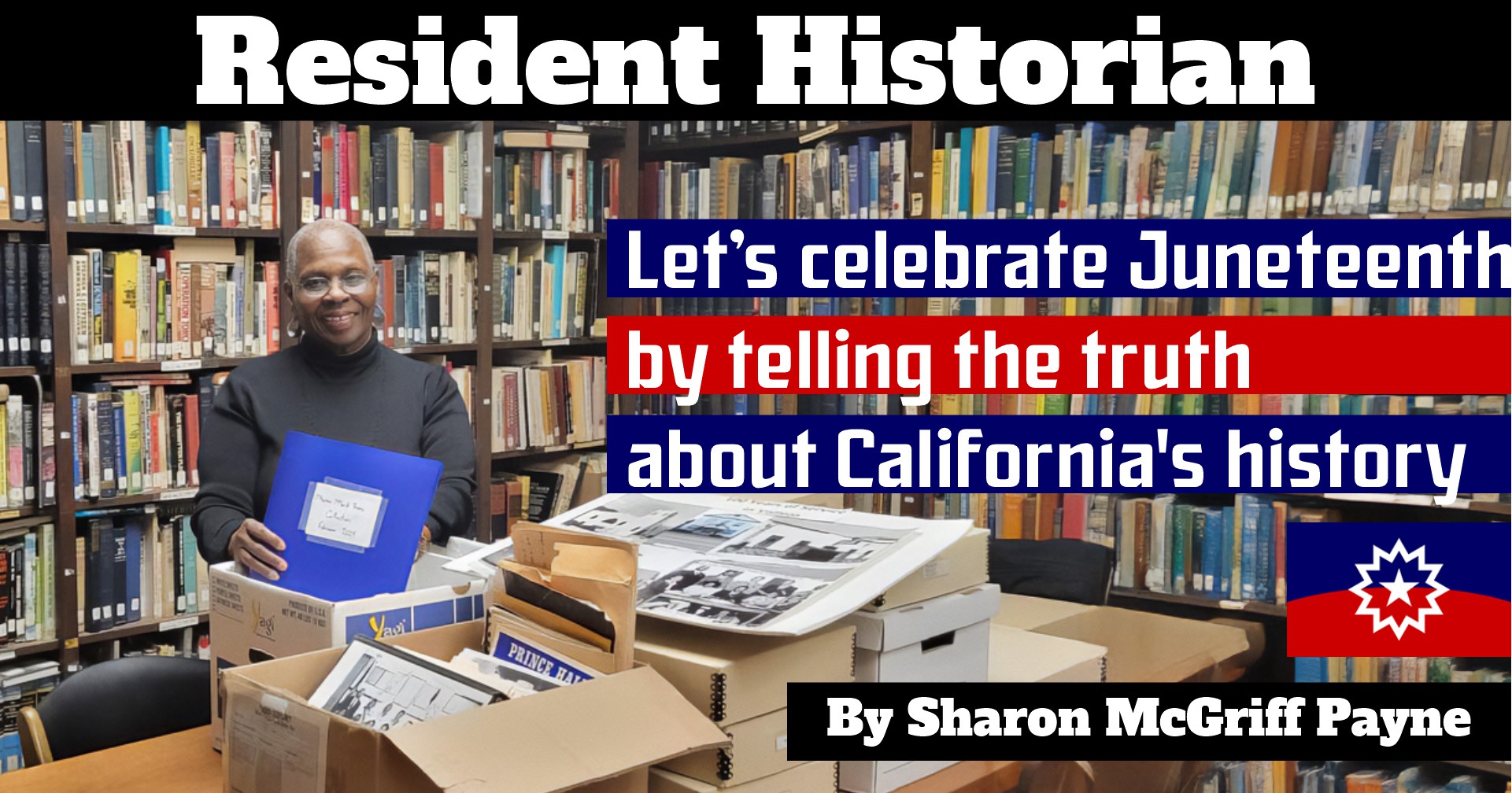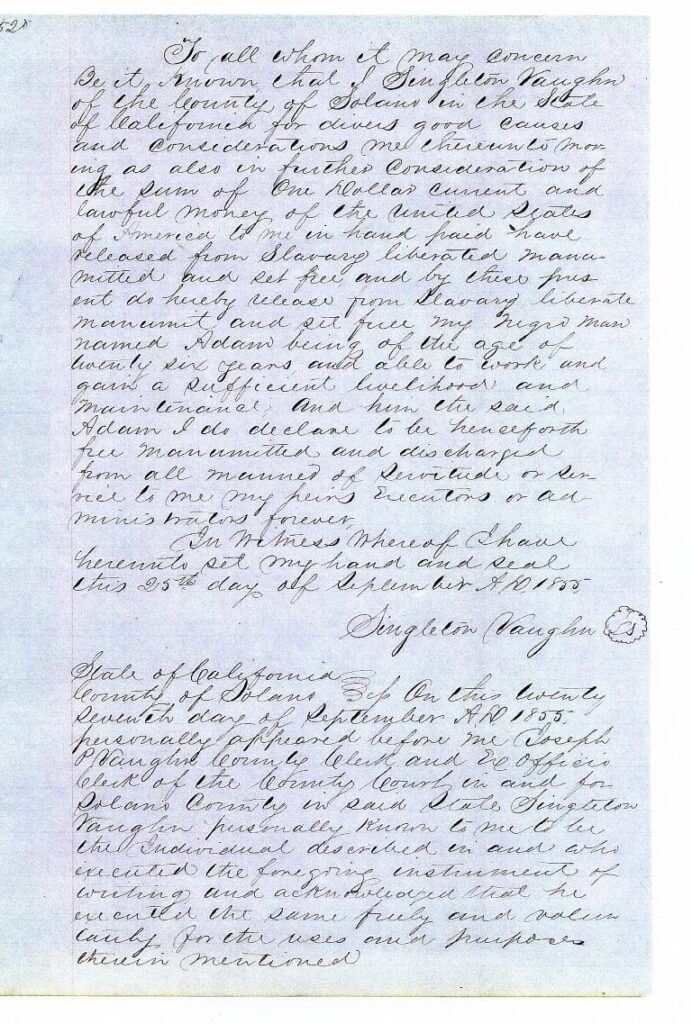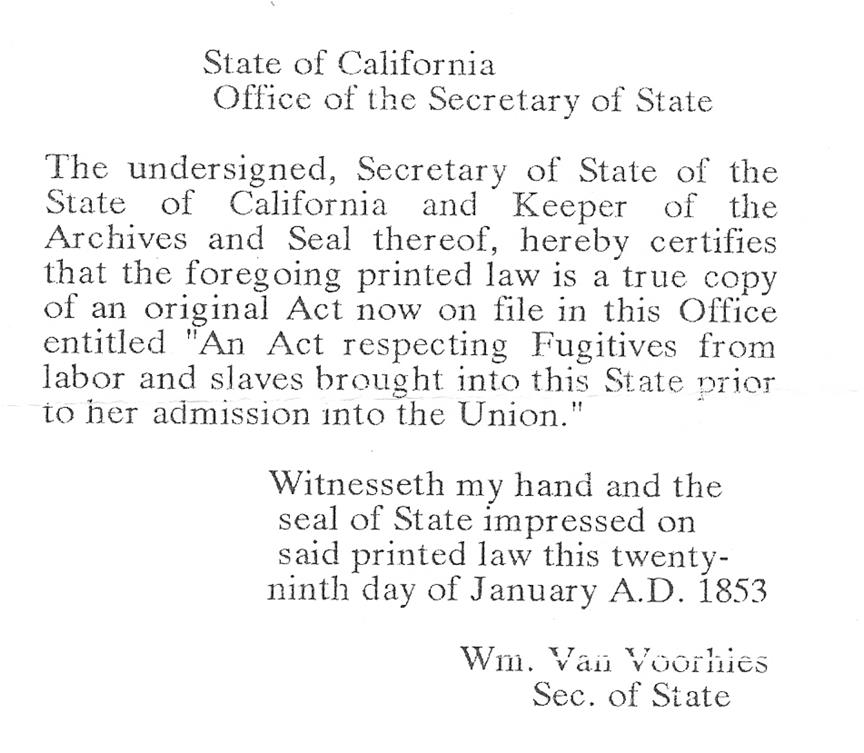As we prepare to celebrate Juneteenth, a day that marks the freeing of enslaved people in Texas – it’s important to remember that the “free” state of California was anything but for many African Americans in the mid-19th Century.
Slavery, I was taught as a youngster educated in Vallejo public schools, was practiced only in the South. California, I was told, was a “free” state where human beings did not own other human beings.
So, imagine my surprise, while researching my book, “John Grider’s Century: African Americans in Solano, Napa and Sonoma from 1845 to 1925” I found a manumission – or freedom – paper that set Adam Willis, a young Black man free from slavery in Benicia on September 27, 1855. I found the document in the Solano County Archives in Fairfield. Willis was enslaved to Singleton Vaughn of Benicia for nearly eight years before he was set free in 1855.
John Grider, the central figure in my 2009 book, had come to California from Tennessee in 1845, enslaved to George H. Wyatt, who would later be named one of Vallejo’s first justice of the peace. Grider was one of seven Black men at the so-called Bear Flag Revolt at Sonoma in 1846. Grider was among the thousands of Black men, women and children who were brought to California from slave-holding states during the 1840s Gold Rush. And like the majority of those African Americans, they were brought here to mine for gold for their owners and, ultimately, to buy their freedom.
For all of those who argue that slavery was no problem in California, I ask a simple question: “If we didn’t have slaves in our state why was it necessary to have a Fugitive Slave Act that was enacted in Vallejo – the state’s capitol at the time – in 1853. The law allowed slave owners who brought their human property here before California statehood in 1850, to return to the South with their enslaved.
In my research, I learned of countless men, women, and children enslaved in the North Bay. Their names included: Catherine Jackson, Elizabeth Bundy, and Adam Willis of Benicia; Esther, Matilda, and Abraham Seawell of Napa; Nancy Geary of Dixon; and 16-year-old Jacob Graham who is listed in the 1860 Federal Census as a slave in Sonoma.
An 1850 abstract of the California state census reported 13 enslaved men and one woman had been brought to the Vaca ranch in Solano County where they were to work under “contract” for two years – and then set free.
Author Delilah L. Beasley discovered numerous freedom papers while researching her groundbreaking book, “The Negro Trail Blazers of California, ” which was published in 1919. A more thorough search of Northern California archives would probably unearth other documents that freed Black people.
Juneteenth, as a holiday, should serve as a reminder that there is much more to learn about American history, even those parts that many would rather forget.



